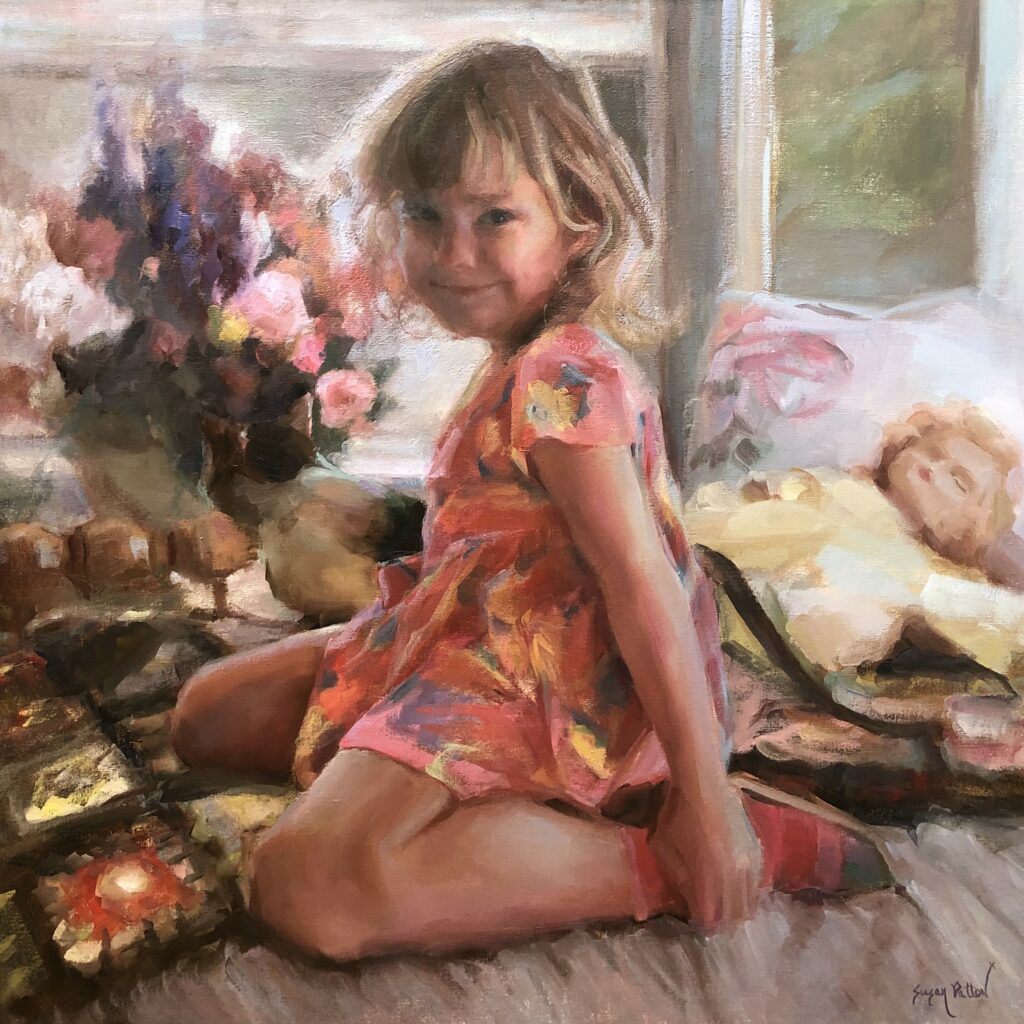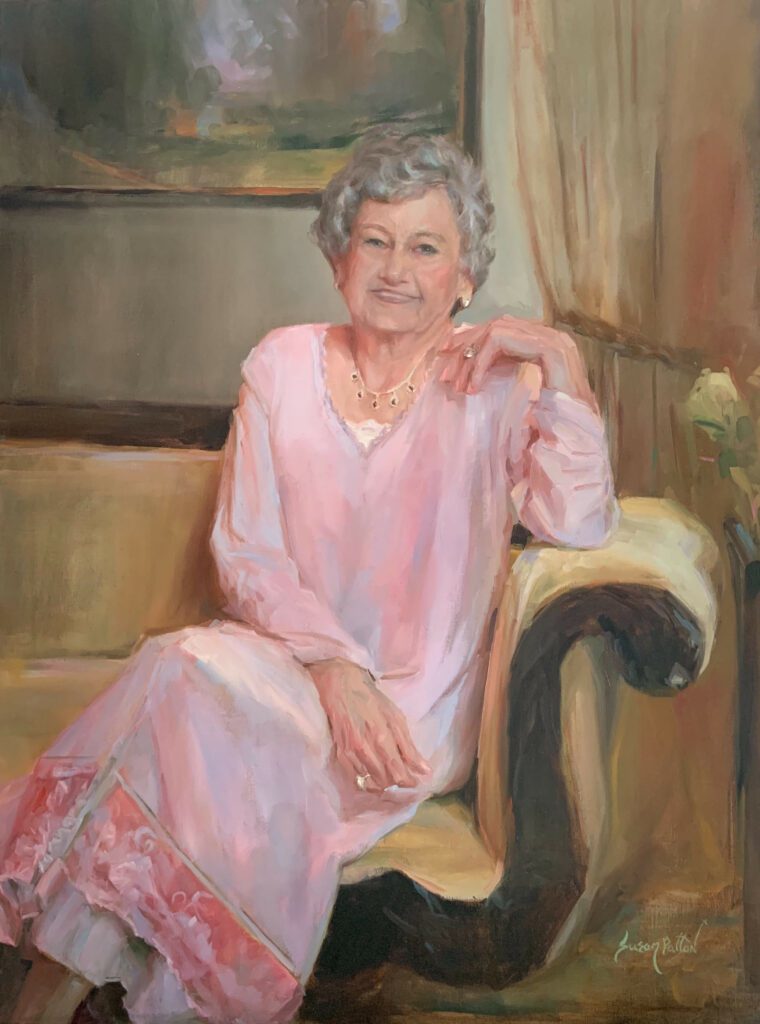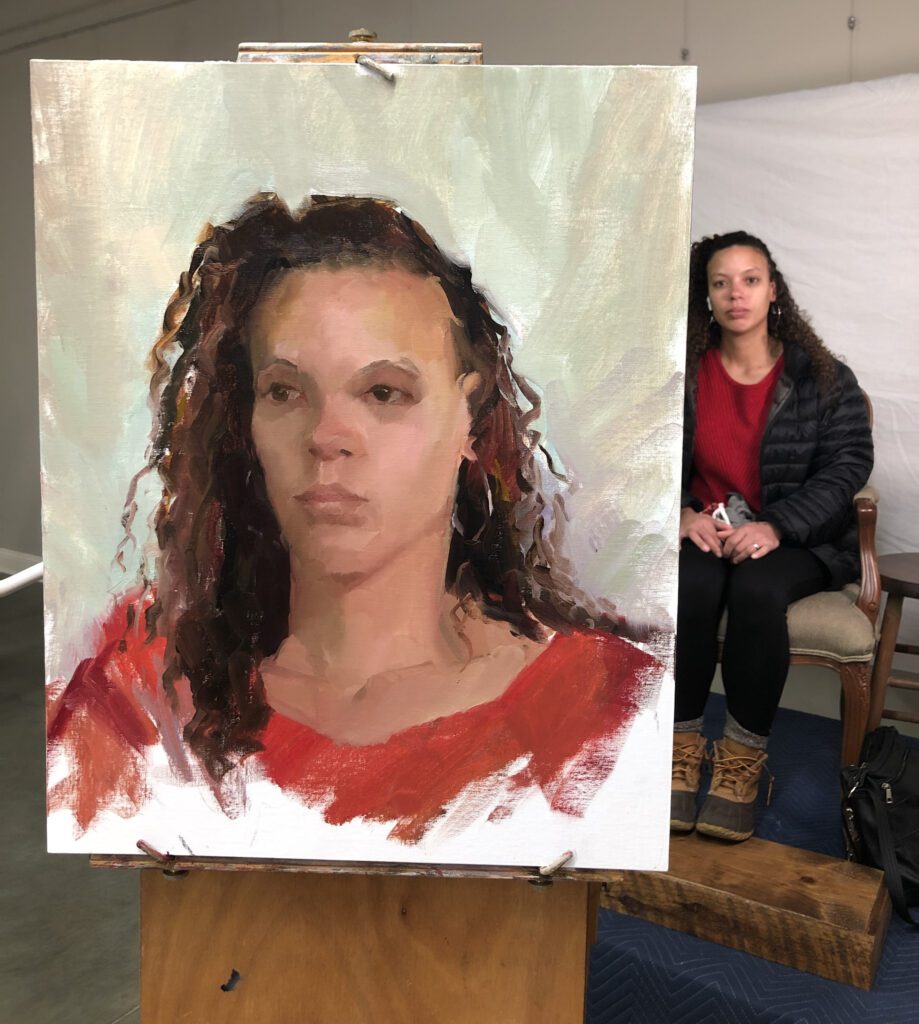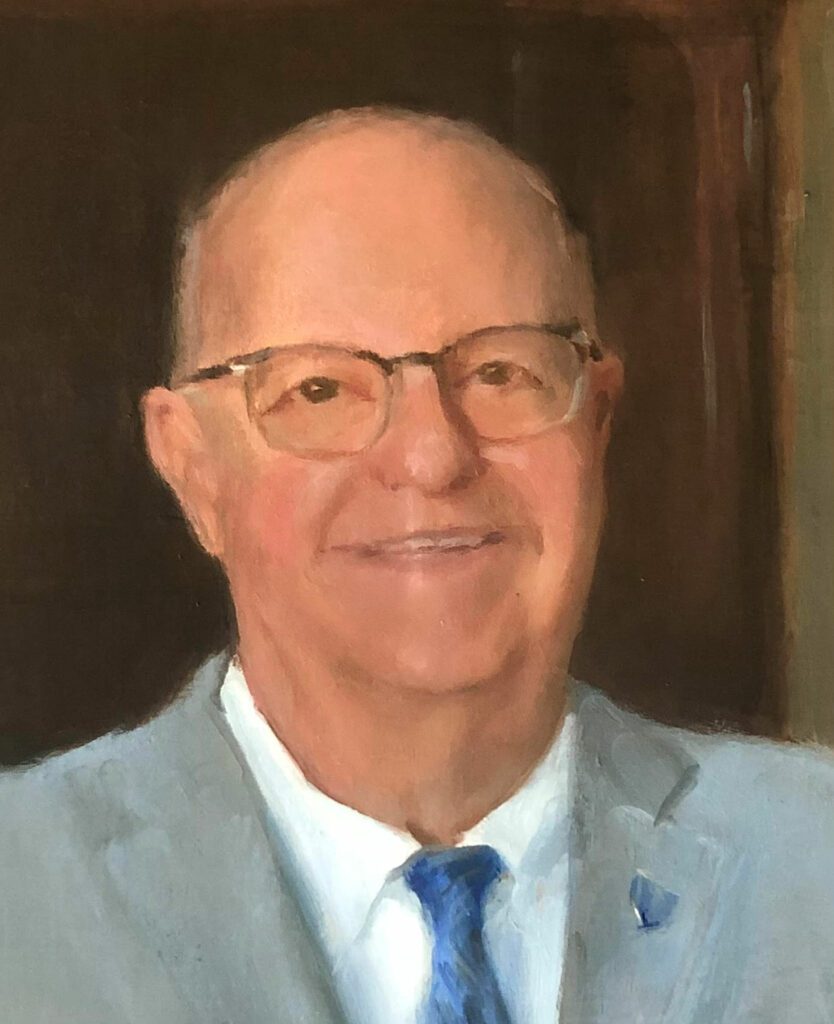Character, Personality, Spirit, Soul – these qualities cannot be measured by the length of the nose or the distance between the eyes. Yet, they are what a client is looking for when they commission me to paint a portrait. They can be revealed, however, in the movements, gestures and tendencies of the sitter. They are glimpsed when a subject interacts with the world around them, for example the way they tilt their head in response to a question, or nod when emphasizing certain words, or the way they move their hair, or even the way they keep their eyes on a nearby person they love. These small but revelatory motions cannot be captured in a single, still photograph. Yet, they are crucial for understanding personality and for creating a meaningful portrait.
In addition to painting studies from life, I use photographs as reference — multiple photos instead of just a single one. But even a series of photos, after a month or two in the studio, become quiet and stagnant. The memory of the photoshoot is much less in the front of my mind and it becomes harder to recall who I am painting, not just how they look. And it is who I am painting that matters. So that is why I began taking videos during my photoshoots.
Usually, I try to take the video when the client is “off guard”, though I always let them know at the beginning of the session that I will be filming. I want to see the unhindered character traits and mannerisms of my subject because those traits often form a large part of how the person is perceived. Video also helps me better understand the anatomy of my sitter because it captures him or her turning their head, providing a three-dimensional view of the skull, very helpful for understanding the upturn of the nose, or how deep the eyes are, etc., (photos often lack this level of information).
In addition to life sittings when possible, and after studying the videos to watch for clues of character, I will choose a “main” photo reference that most portrays the sitter and get it approved by the client. Between sittings, I will use this still photo 75% of the time, but also flip through other pictures to see various angles and skin tones more clearly. But there comes a time as I work when I forget what it was like, really like, to be around the person. That is when I re-watch the video and see if I am capturing the spirit of the person. I will study the “hints” (the movements and tendencies) and see if I have captured a sense of personality in the collection of shapes on my canvas. I watch my subject’s head as it turns, and see if I have the skull correctly rendered. I look at proportions such as how the head compares to the body or to the arm length. I pick up the brush and trust myself as I work, using the rolling video which forces me to see the person as a whole.
Moving beyond still images, I see the need to use more modern devices and watch people move, laugh, talk and breathe, and see if my painting holds the image of a being that loves, thinks and feels. It just makes sense to me. I cannot always have that person, child, or animal sit still for me to paint from life, so the video is the second-best option.
There are other advantages as well. When I ask a client to send me a video (so that I can appreciate the character and get a sense of who I am painting), it goes beyond a technical request: it is a tribute that honors the subject. It shows my deep respect not only for the person but also for the art of portraiture. It reminds me to not merely copy a photo and “miss the forest for the trees.” It gives my eyes a break and stimulates my brain to think.
I do not know what will come next in our options for references when painting portraits – maybe a hologram sitting? But I do know this: we are past the age of still photos. I think the reason we like them is that they are “safe.” Necessary? Yes, I believe so, for a big portion of the painting. But let us also bring out the video and paint, and put the photo on standby for a while. Use the photo for technical information, but do whatever it takes to paint the person. Between sittings, or in lieu of sittings, videos are a great tool to study the unique, subtle, quirky, or beautiful movements that remind us of the breath behind the body, and help us capture it with a paintbrush.
*This youtube video is an example of my process of taking video for a portrait commission:




Leave a Reply